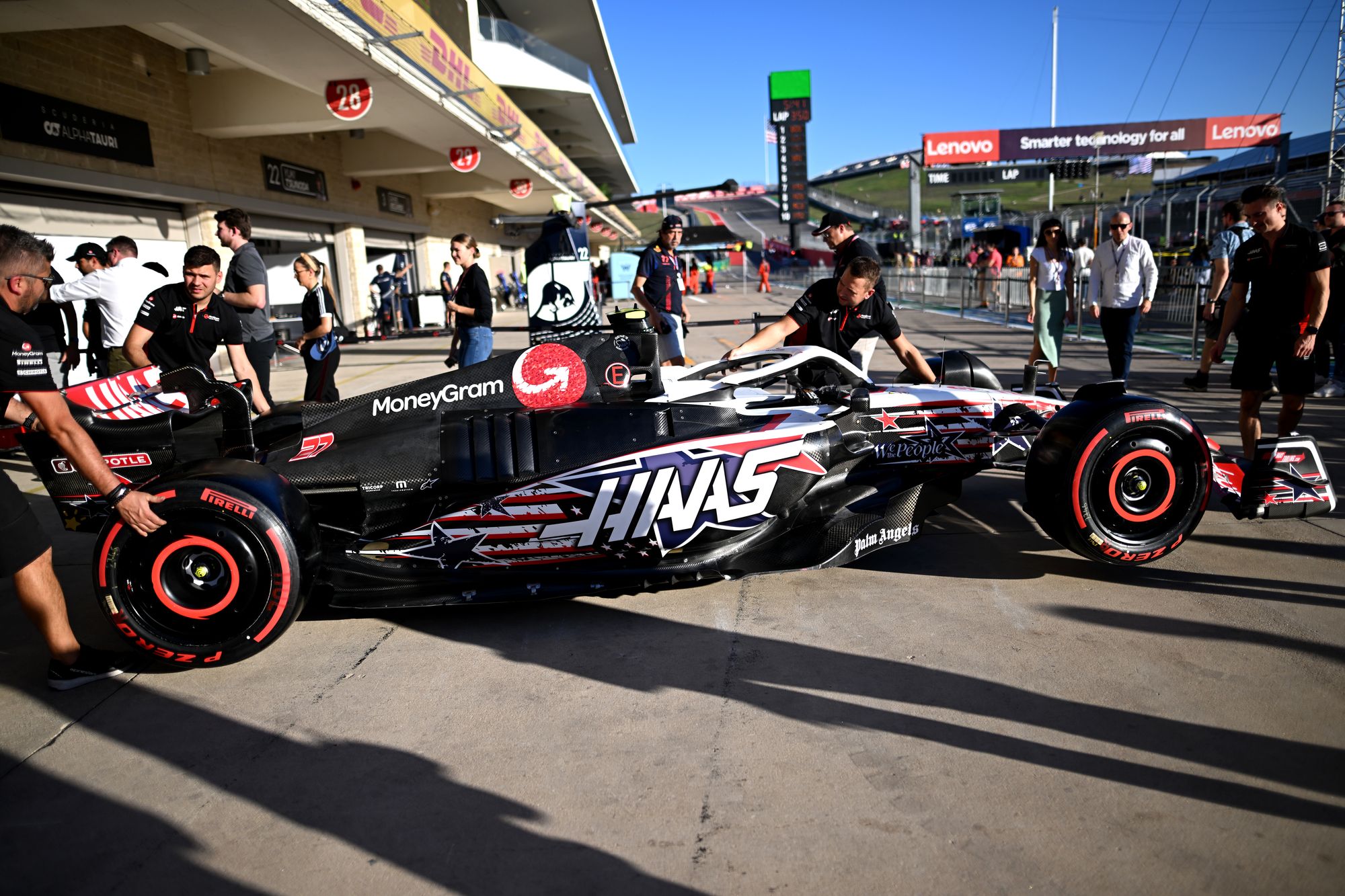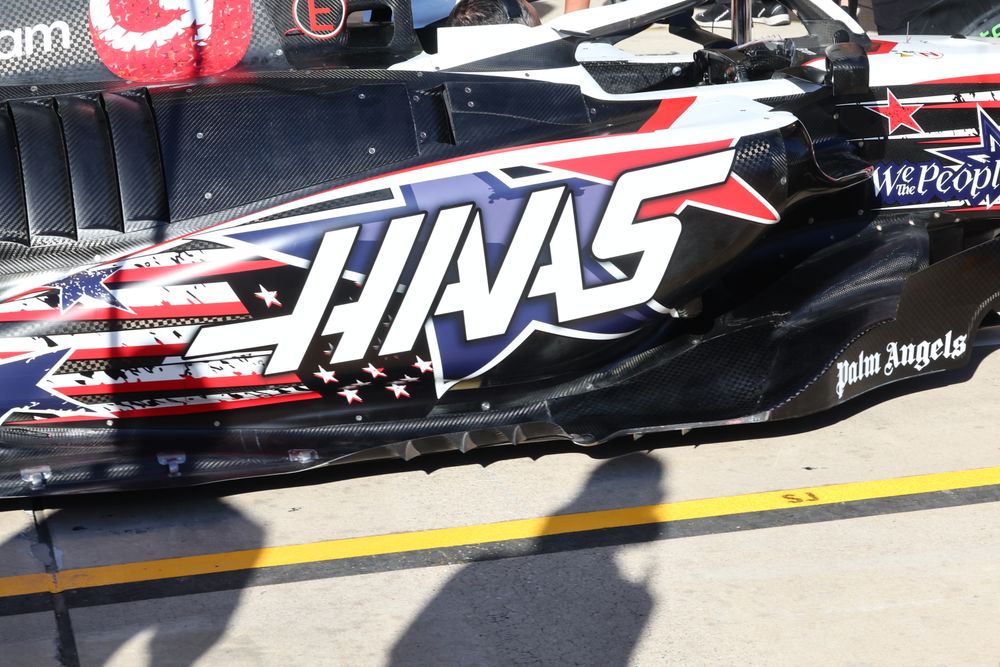Up Next

Haas’s major upgrade for the United States Grand Prix has emerged, with significant changes that prioritise addressing the tyre degradation problems for a car that has been reasonably fast over one lap but usually fallen back dramatically on race day.
To me, the tyre deg issue points to a fairly dramatic forward centre of pressure shift during braking and late in the corner entry phase.
It can help get the front tyres working over one lap in qualifying, but unfortunately, after a few laps, this sort of characteristic takes too much out of the rear tyres. When that happens, traction suffers and the problem just spirals.

To address this situation, Haas has arrived in Austin with what is more or less its first big development package of the season.
It’s a decent time to bring some updates as it allows time in the remaining five races to get the best from the car. If it works well, that gives you confidence to make some big decisions over the winter when you are fully involved in next year’s car.
Haas calls it a new concept as the original one had run out of steam with the lack of previous upgrades down to not finding enough performance in the windtunnel to justify the manufacturing expense. So let’s have a look at what the team has spent Gene Haas’s hard-earned dollars on.

The inlet area has changed shape subtly (green highlight). The pictures are at a slightly different angle, but it looks like the top of the inlet is now further rearward and the bottom of the inlet slightly forward where it meets the chassis.
My reference point for this is the red cross. I have put this on the head of a fixing on the side of the chassis, which is probably retaining something inside the monocoque. This will reduce the airflow spillage (when the radiator starts to block off at higher car speeds) from going into the sidepod undercut, meaning that the flow structure will be more consistent with speed in this area.

This change in the sidepod profile (green highlight) is to generate more downwash than the previous inwash coke bottle design.
Downwash in this area has become the norm, as once again it allows for more consistent flow along the outer edge of the underfloor.
Haas has the now common sidepod top surface internal gully where it joins the inner engine bay surface. This will direct that downwash into the middle of the car, but it is not shown in these pictures.

This is the main area of development that I can see. Previously, Haas didn’t really have very much detail on the outer edge of the floor.
As the team has explained, it was struggling to get any response from aerodynamic research both from computational fluid dynamics (CFD) and in the windtunnel and that is why it had to change its approach to the concept to bring it more in line with what other teams are doing. And by other teams that of course means Red Bull.
You can work forever on optimising the smaller details but if you don’t have the correct flow structure in that area then it will all be a waste of time.
With better and more consistent airflow along the edge of the floor, it will be easier to find the solutions that generate the vortices along this edge, highlighted with the green, yellow and blue arrows.
These vortices are intertwined in each other, so making sure that they increase in strength as opposed to one bursting the other is very important.

The engine cover is all part of the same plan. As opposed to minimising the volume at the rear axle area, which is highlighted in blue, Haas has gone for optimising the downwash to the middle of the car, highlighted in green.
Again, this will improve the performance and consistency of the beam wing, and in turn, the diffuser. It also allows a low pressure area for the placement of the hot air extraction louvres, which are highlighted in red. These have been added but will be altered in size from circuit to circuit as required.
Overall, this is a fairly large update. If it is an improvement with regards to the tyre degradation problems and Haas can get on top of the set-up changes it will need to make to optimise it, then Austin is a circuit where it will show up pretty quickly.
It is a sprint race weekend, so there’s not much time for all that. But at least Haas will have two races to double-check if its tyre drop-off compares more favourably to the others than it has previously.
What Haas said about its upgrades
As well as Gary Anderson's thoughts on Haas's upgrades, the team has also issued short explanations for its upgrades. You can read these, below.
1 Front Corner Performance - local load
The front brake duct inboard exit has been updated with small geometrical changes. The wake management has improved with better flow characteristic coming from the front brake duct inboard exit, gaining aero load with good efficiency.
2 Floor Body
The floor body has been modified in the latter part of the diffuser.
The expansion and contraction of the floor body are now optimized to guarantee less aero sensitivity with car state changes. The new design has also improved the sensitivity in case of strong side wind.
3 Floor Edge
A new floor edge and new floor edge wing has been introduced to the floor design.
The floor edge element with a new shape can guarantee a more efficient path of the flow driven by the under floor, and increase the aerodynamic efficiency.
4 Sidepod Inlet
The sidepod inlet has been modified to work with the new floor edge design.
The new shape of the sidepod inlet wants to improve the flow around the sidepod maintaining the same cooling feeding as the previous configuration.
5 Coke/Engine Cover
Together with the cooling inlet, the surfaces of the engine cover, the sidepod and the coke panel has been revised. The new sidepod shape will allow a better interaction of the airflow on the side of the car and in the area between the rear wheels. Engine cover with increased cooling exit.
6 Cooling Louvres (circuit specific - cooling range)
New louvre panels have been designed for the new bodywork. Two new louvres panels and few different blankings will allow to set the different cooling levels required race by race. The louvres have smaller dimension compared to the previous solution, as the central engine cover cooling exit has been increased int the new bodywork.




